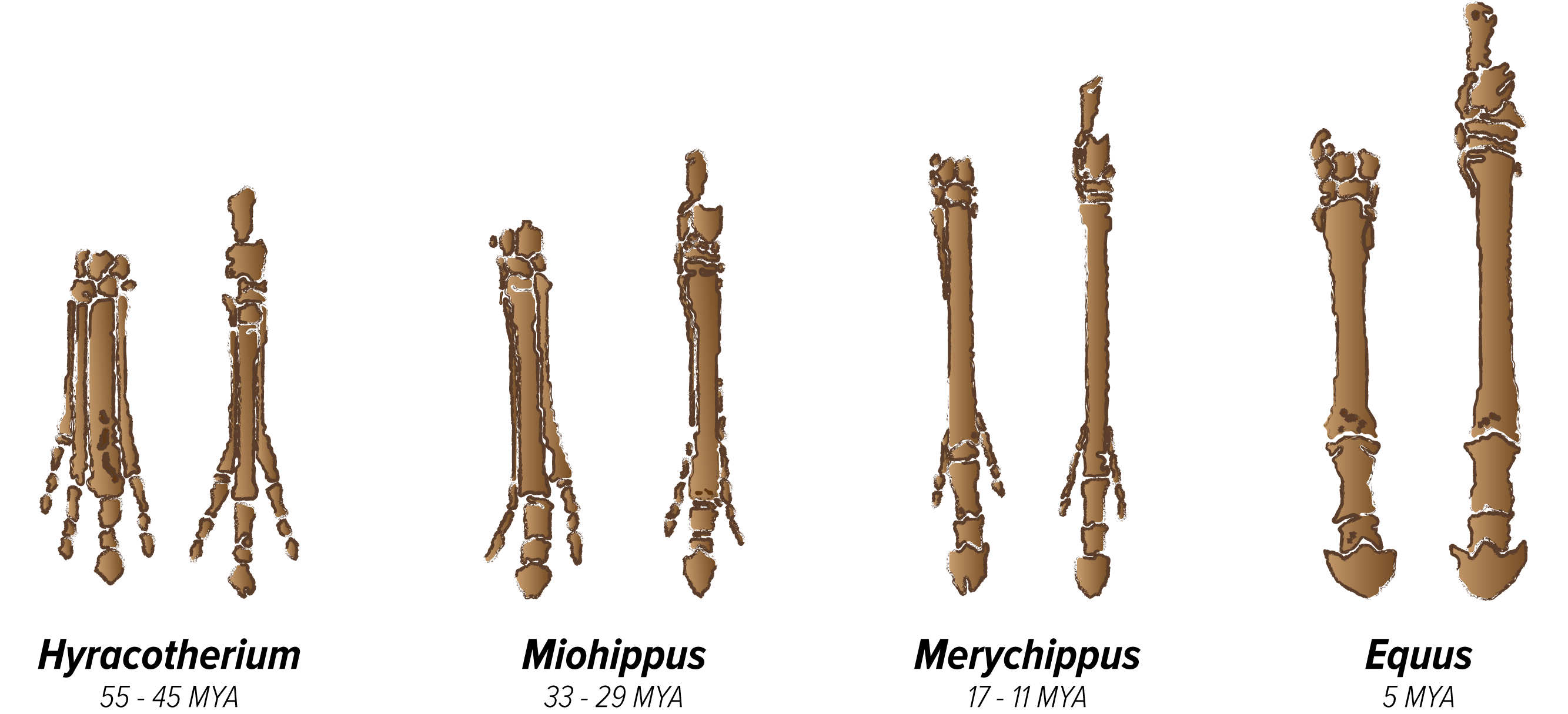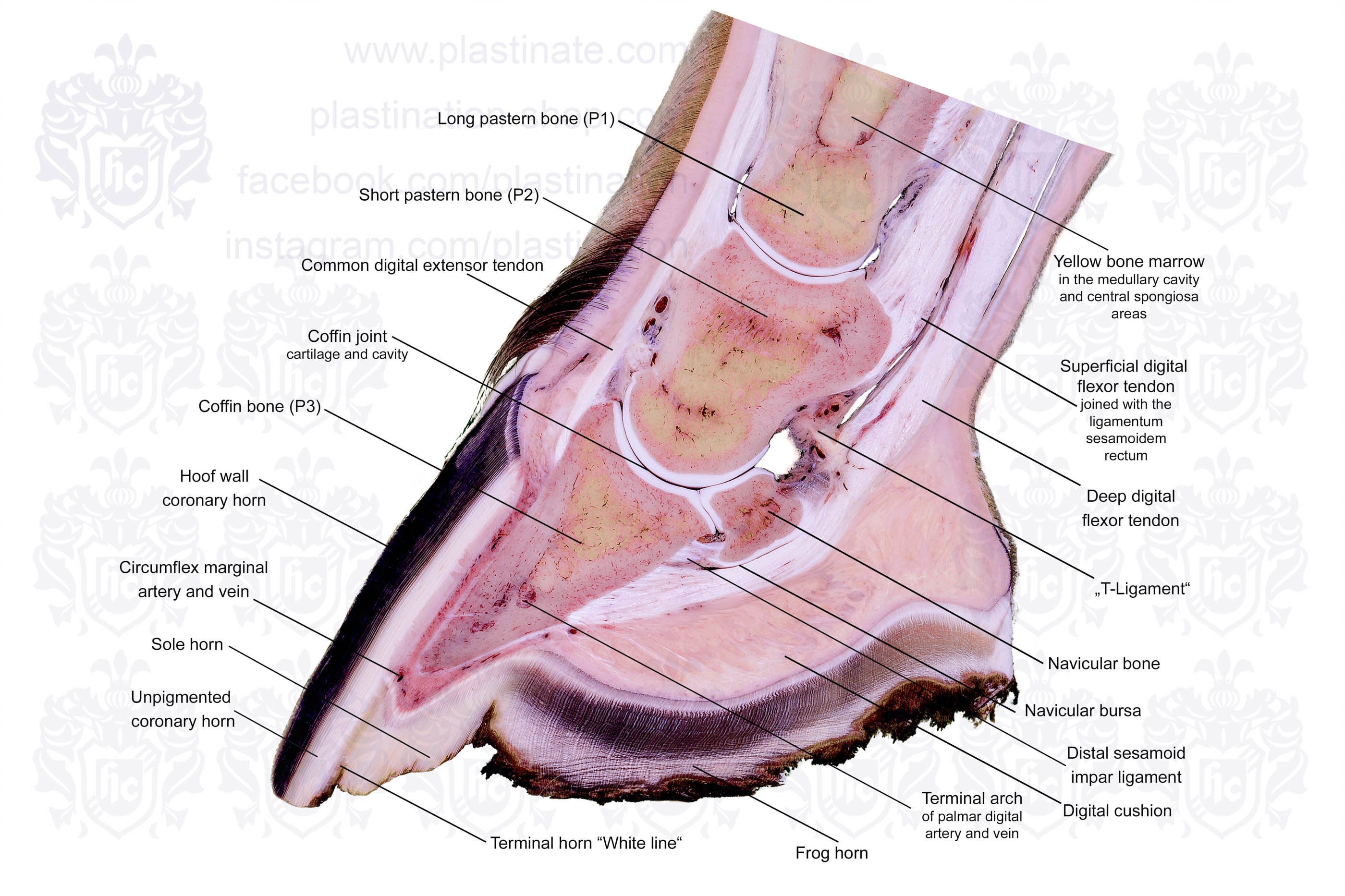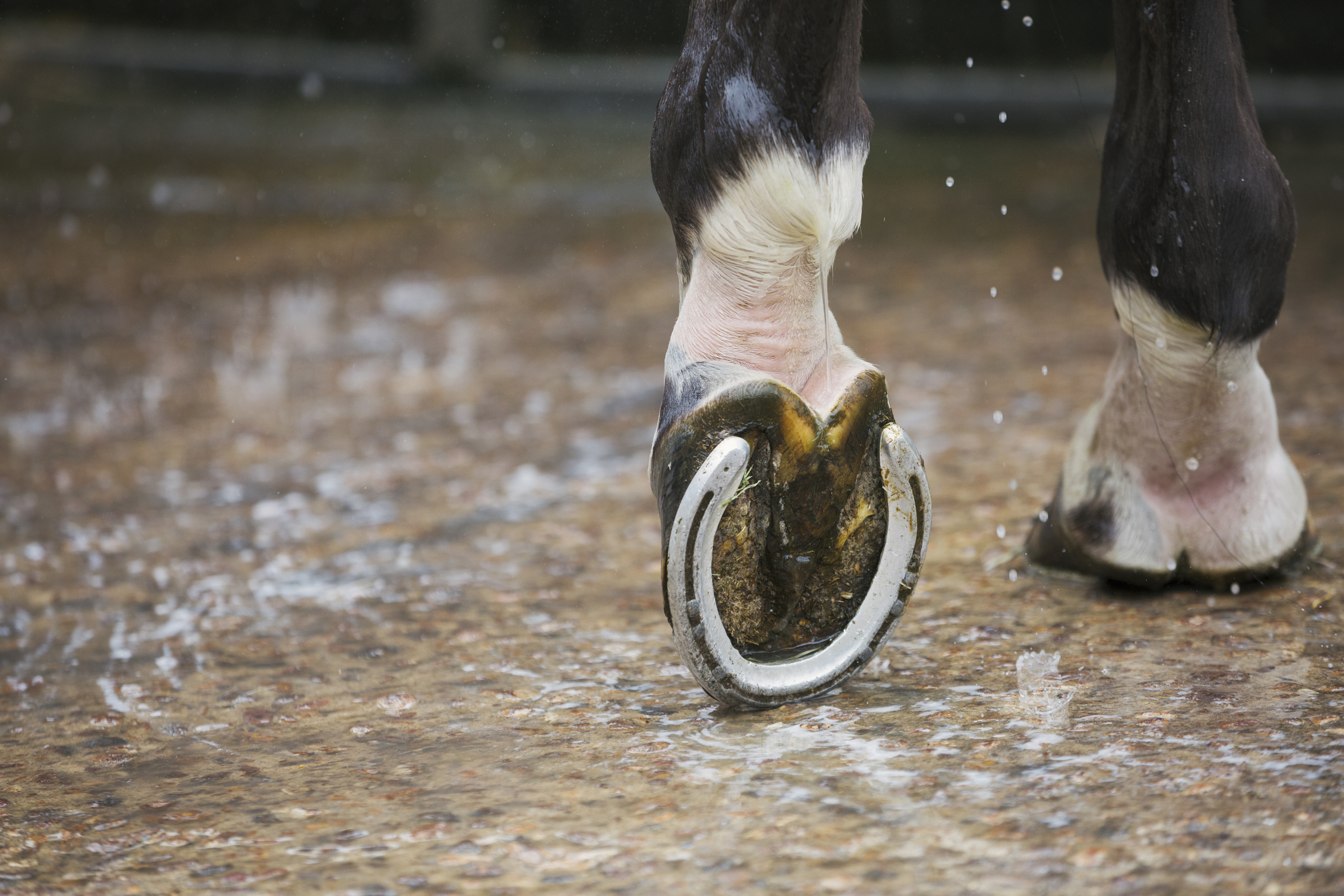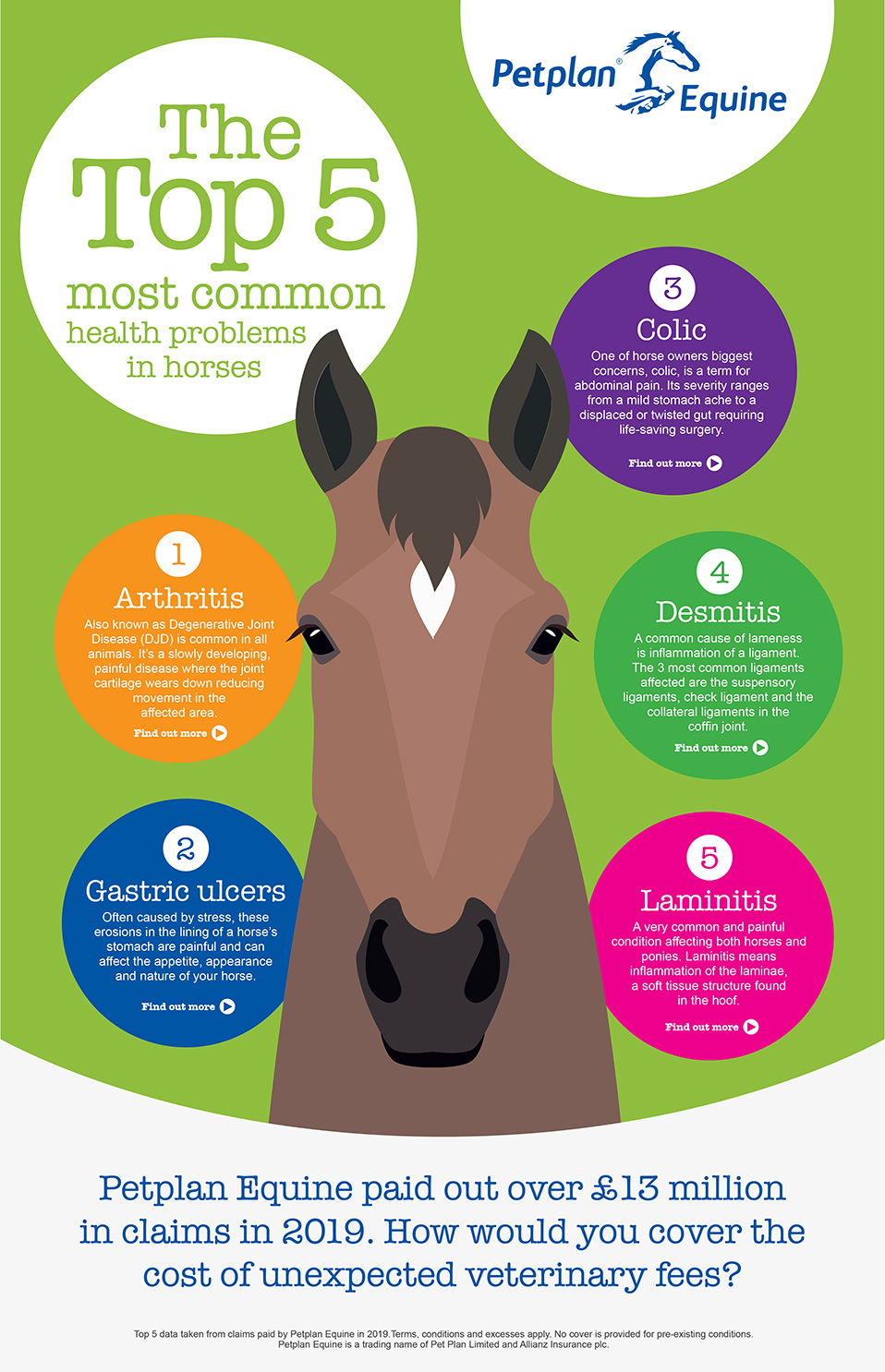Horses are majestic creatures, known for their speed and grace. But have you ever wondered about the foundation of their agility and strength? It’s their hooves! These seemingly simple structures are, in fact, complex and vital to a horse’s survival and overall health. Let’s delve into the fascinating world of horse hooves and discover why these animals have evolved to walk on the tips of their toes.
The short answer as to why horses need hoofs is multi-faceted:
- Horses have hoofs to support up to three times their weight, enabling swift gallops.
- Hoofs serve as shock absorbers, protecting the musculoskeletal system.
- Their unique design facilitates energy-efficient movement, allowing these heavy creatures to maintain remarkable speed.
- Hoofs are interconnected with the horse’s body, aiding in communication and energy diffusion.
- They are essential for the horse’s interaction with their environment, offering protection and sending signals to the nervous system.
The Ingenious Engineering of Equine Hooves

The unique capabilities of horses, from their impressive speed to their remarkable maneuverability, can be significantly attributed to the advanced design of their hooves. These appendages are not merely for locomotion but serve a myriad of purposes that have been crucial in adapting to changing environments and maintaining their fitness. By examining the hoof’s wide-ranging functions, we appreciate the evolutionary success of these animals.
Detailed Structure of the Equine Hoof
A closer look at the equine hoof anatomy reveals a complex arrangement of components that collectively contribute to the hoof’s durability and multi-functional nature. The hoof’s robust outer wall is just one piece of this intricate puzzle. Below this resilient barrier, various specialized tissues play their part in ensuring the hoof remains a formidable feature of the horse’s anatomy.
In-Depth Exploration of Hoof Tissues
- Periople: This layer provides essential moisture to the external hoof wall, reducing the risk of brittleness.
- Coronary Band: Positioned at the hoof wall’s crest, it’s responsible for generating the hoof’s growth material.
- Sole: Its concave configuration furnishes extra support and mitigates stress.
Significance of the Frog within the Hoof Structure
The frog’s contribution to the hoof’s shock absorption cannot be overstated. This V-shaped component is crucial in distributing pressure, enhancing grip, and promoting circulation in the lower limbs. Its condition is often a reflection of the hoof’s overall health, emphasizing the need to pay attention to this critical element.
Roles Played by the Frog
- Provides essential traction on an assortment of ground conditions, helping to prevent slipping.
- Facilitates circulatory function during locomotion, acting like a pump for the horse’s blood.
- Offers environmental feedback to the horse, acting as an informative sensory organ.
Insights into Hoof Growth and Renewal
The dynamics of hoof growth offer a window into a horse’s health and the care it receives. Consistent growth indicates good health and appropriate management, while irregular growth can signal issues. Proper nutrition and stable living conditions are vital for healthy hoof development and averting complications.
Essential Elements for Hoof Integrity
| Nutrient | Benefit |
|---|---|
| Biotin | Encourages robust hoof growth |
| Amino Acids | Contributes to the hoof’s protein framework |
| Minerals | Fortifies the hoof’s composite structure |
Adaptive Dynamics Between Hoof and Environment
Hooves show remarkable adaptability to the various grounds they encounter, from rugged landscapes to soft pastures, providing the horse with necessary stability and reducing deterioration. This capacity to adjust is crucial for wild horses across diverse terrains and remains important for domestic horses dealing with man-made surfaces.
Hoof Responses to Environmental Challenges
- Thicker soles evolve in stony conditions as a protective adaptation.
- In moist environments, hooves may grow softer and more supple for better traction.
- Shoeing might be necessary for domestic horses to handle artificial ground surfaces.
To conclude, the horse hoof function encompasses a spectrum of roles, all indispensable for the horse’s ability to cope with a range of situations. Delving into the equine hoof anatomy not only highlights the necessity for conscientious hoof maintenance but also accentuates the remarkable nature of these sophisticated biological structures.
Delving into Hoof Dynamics and Adaptation

Horse hooves have developed through a long process of adaptation, demonstrating the incredible interplay between the horses’ physiology and their environment. The keratinous composition of the hoof grants horses the necessary support for their sizeable frames and the resilience required for their varied activities. This highlights the intricate connection between the horses’ form and their specialized, efficient locomotion.
Dispersion of Force: A Vital Function
With each step, a horse’s hoof encounters significant force; it’s designed to mitigate this through an intelligent multi-layered system. This system not only protects the horse’s legs from the shock of impact but also contributes to the overall health of the musculoskeletal system, showcasing the hoof’s integral role in preserving the horse’s physical integrity.
- The hoof wall serves as the initial shock absorber upon ground contact.
- Internal structures, such as the digital cushion and lateral cartilages, play a role in dispersing shock.
- The frog’s expansion and compression further assist in this crucial process.
Optimized Locomotion: The Result of Evolutionary Progress
The hoof’s design is the result of evolutionary refinement, focusing on maximizing energy conservation and enhancing propulsion. This is especially evident in the horse’s ability to gallop, a gait that relies heavily on the hoof’s capacity to store and release energy efficiently.
Understanding Hoof Health and Function
A deeper look into hoof health reveals the dynamic processes at play that ensure the hoof’s regeneration and vitality. The hoof’s inherent ‘pumping’ action during movement not only boosts circulation but also facilitates essential bodily functions, such as thermoregulation, thereby emphasizing the hoof’s contribution to the horse’s overall well-being.
- Oxygen and nutrient delivery to hoof tissues is enhanced by improved blood flow.
- The hoof’s mechanism aids in the maintenance of the horse’s systemic health.
Defense Mechanisms of the Hoof
Hoof structures act as the primary defense against environmental hazards and potential injuries. This protective feature serves as a shield, safeguarding internal components from external damage. The hoof’s durability and shape are key to preventing injuries and ensuring the horse’s mobility.
- Resistance to environmental wear is provided by the tough outer wall.
- The hoof’s sole acts as a protective layer against ground-related injuries.
Adaptations of Hoof Over Eons
Evidence from the fossil record indicates a gradual but profound transformation in hoof structure, shaping the horse’s evolutionary success. These natural modifications have influenced the horse’s gait, optimizing energy efficiency and stability, allowing horses to thrive in diverse environments.
- The transition from multiple toes to a single hoof is a clear sign of evolutionary advancement.
- Variations in hoof shape and size have evolved in response to different ecosystems and climates.
The multifaceted nature of the hoof, from its impact-absorbing properties to its significance in the horse’s overall health, is vital. Advancements in our understanding of hoof physiology contribute to better care and management practices, essential for preserving the health of these noble animals. The sophistication of the hooves, shaped by the evolution of horse hooves, stands as a tribute to nature’s creativity and the horse’s extraordinary ability to adapt.
Maintaining Peak Condition in Equine Hooves

Ensuring the health of a horse’s hooves requires a consistent and attentive approach. Knowledgeable maintenance and prevention are key to avoiding discomfort and mobility issues in these animals. A well-rounded care plan includes meticulous cleaning, routine examinations, and immediate attention to potential hoof problems.
Essential Hoof Maintenance Practices
A daily hoof maintenance program is critical for staving off common hoof ailments. Integral to this program are:
- Using a hoof pick to eliminate mud, rocks, and other debris that could lead to injury or infection.
- Applying conditioners as suggested by equine foot care experts to preserve the hooves’ moisture and flexibility.
- Providing a dry environment to avert hoof conditions that thrive in moisture, like thrush.
Guarding Hooves from Environmental Hardships
Hooves can be adversely affected by their environment, necessitating protective measures such as:
- Offering quality bedding to reduce contact with dampness or ammonia, which can compromise hoof integrity.
- Modifying care during colder seasons with products designed to prevent snow accumulation that might disrupt the horse’s balance or cause stress.
Essential Trimming and Protective Footwear
Consistent professional trimming is vital to keeping a hoof’s proper shape and warding off unwanted defects. Selective shoeing, based on the individual horse’s requirements and living conditions, aids in reinforcement, grip, and hoof safeguarding, proving particularly beneficial for horses in active service.
Crucial Dietary Elements for Hoof Reinforcement
Hoof strength and growth are heavily influenced by diet. The following nutrients are vital:
| Nutrient | Function in Hoof Health | Common Sources |
|---|---|---|
| Zinc | Facilitates keratin formation | Whole grains, legumes |
| Copper | Boosts tissue resilience | Leafy greens, nuts |
| Omega-3 Fatty Acids | Bolsters hoof condition | Chia seeds, fish oil |
Identifying Symptoms of Hoof Discomfort
Spotting early indications of hoof distress is critical for timely and effective intervention. Symptoms include:
- Behavioral changes such as reluctance to move, which may suggest hoof pain.
- Observable alterations in the hoof structure like cracking or uneven growth.
- Increased warmth or puffiness in the hoof area, which could indicate an underlying issue.
Harmonizing Exercise with Hoof Well-being
Regular physical activity is important for hoof vitality, as it stimulates circulation, fostering growth and repair. Nevertheless, exercise regimens should be thoughtfully designed to prevent undue stress or harm to the hoof.
Addressing Hoof Conditions: Timely Responses
Immediate action is imperative when hoof problems arise. Effective responses include:
- Seeking expert advice from a veterinarian or farrier at the first sign of irregularity for accurate diagnosis and therapy.
- Employing specialized shoeing methods or protective hoof wear to relieve discomfort and promote recuperation.
- Adjusting the horse’s activity or providing rest to support the healing process.
By emphasizing consistent hoof care and catering to the unique needs of each horse, owners can significantly diminish the likelihood of hoof complications. Vigilant monitoring, a comprehensive care routine, and collaboration with hoof care professionals are instrumental in safeguarding the longevity and agility of these animals.
Horses are fascinating creatures, and their behavior and physical attributes often pique our curiosity. If you’re intrigued by horses and want to learn more about their unique characteristics, you might be interested in exploring why horses exhibit certain behaviors or have particular features. For instance, have you ever wondered about the reasons behind a horse’s yawn? Delve into our article on why horses yawn to discover more about this intriguing phenomenon. Additionally, understanding why horses are shod can give you insight into the care that goes into maintaining their health and well-being; read our piece on why horses are shod for a deeper understanding. Lastly, the function and importance of a horse’s tail are not just for swatting flies; find out more by checking out our article on why horses have tails. Each of these articles provides a glimpse into the fascinating world of horses, complementing what you might learn about why horses have hoofs.
Conclusion: Why Horses Need Hoofs

In conclusion, the question of why horses need hoofs has a multifaceted answer. Hooves are not merely for walking — they are complex, living structures essential for shock absorption, providing protection, enabling efficient movement, and contributing to the overall health of the horse. They are the product of millions of years of evolution, perfectly designed to support the horse’s size, weight, and lifestyle. Understanding and maintaining the health of horse hooves is paramount for the well-being and functionality of these incredible animals.



